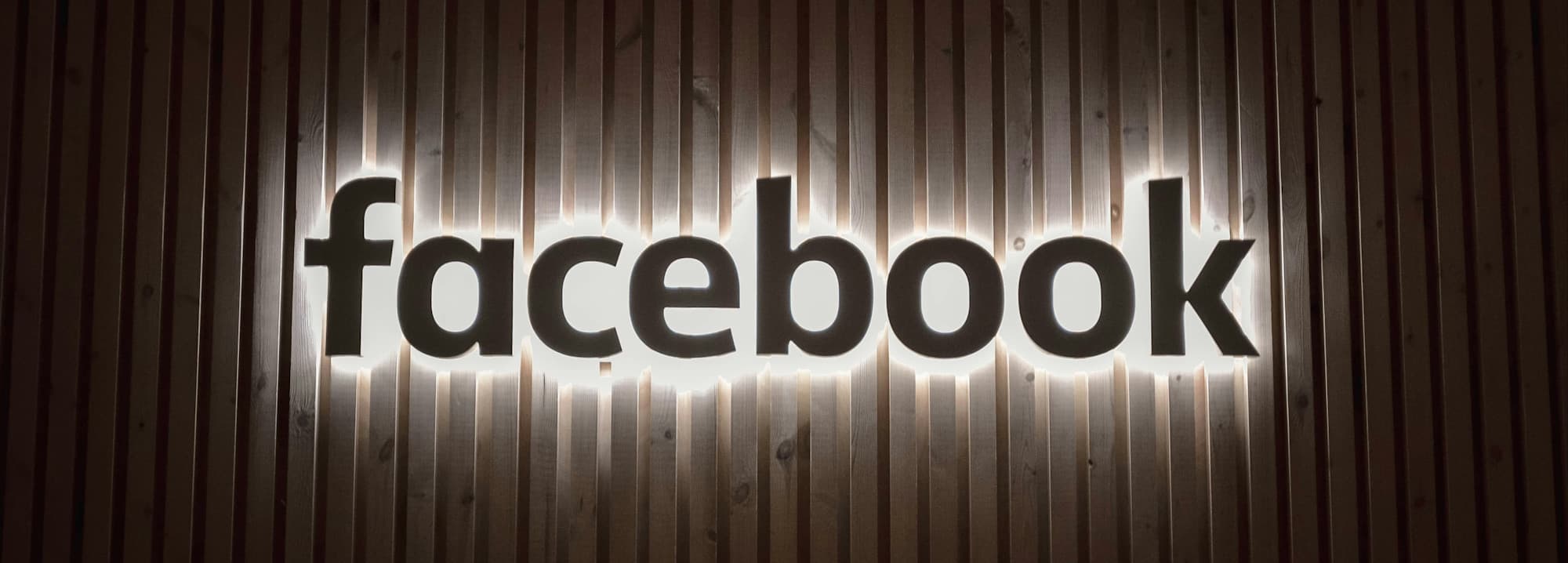
How to Run Facebook Political Ads for Your Campaign
Facebook political ads can be one of the most affordable ways to reach voters where they already spend time, scrolling through their feeds. With even a small budget, candidates can boost name recognition, share their message, recruit volunteers, and raise money.
But running effective ads isn’t just about throwing money behind a post. It requires planning, clear messaging, smart design, and an understanding of Facebook’s compliance rules for political advertising.
In this guide, you’ll learn everything you need to know to create Facebook political ads that work, from designing your first ad to setting a budget, targeting the right audience, and balancing paid ads with organic content.
Why Facebook Political Ads Matter
Even in an age of TikTok and newer platforms, Facebook remains one of the most widely used social networks with around seven-in-ten Americans reportedly using the platform. For campaigns, that means direct access to potential voters in your district.
Here’s why political ads on Facebook are a crucial part of a political digital marketing strategy:
Affordable Reach: Ads can start at just a few dollars a day.
Precision Targeting: Reach voters in your exact city, county, or district.
Scalable Impact: Test small and expand as your campaign grows.
Multi-Purpose Tool: Promote your biography, issues, events, or donation appeals.
For grassroots and Independent candidates, Facebook ads can help level the playing field against big-money campaigns.
How Facebook Ads Fit Into Your Campaign Strategy
Think of Facebook ads as one piece of your broader campaign toolbox. They don’t replace canvassing, press coverage, or community events, but they can amplify all of those efforts. For example:
Use ads to promote your upcoming town hall alongside door-to-door outreach.
Run a fundraising ad the same week your press release goes live.
Pair get-out-the-vote (GOTV) ads with text messages to reinforce turnout reminders.
When ads work hand-in-hand with other outreach, your message becomes harder for voters to miss.
How to Create Effective Facebook Political Ads
Running Facebook ads for your campaign doesn’t have to be complicated. Think of it as a process: first, decide on your goals, then design ads that connect with voters, set a budget that makes sense, follow compliance rules, and refine your approach as you go.
Each step builds on the other. When you approach Facebook political ads with a clear plan, you’ll avoid wasting money and make sure every dollar drives real impact.
Step #1: Plan Your Ad Goals and Budget
Every ad should have a clear purpose. Paid ads are most effective when they reinforce the same messages you’re sharing on the ground, in the media, and on your organic social channels.
Before creating an ad, think about how to use ads to make the most impact at each stage of your campaign:
Early campaign, use ads to build name recognition and introduce yourself.
Mid-campaign, use them to share your message and invite people to donate or volunteer.
Approaching election day, focus your ads on turnout and GOTV reminders.
You also need to figure out how much you can spend on ads. A good starting point is around $5 to $20 a day. That may not sound like much, but you can still reach hundreds or even thousands of voters for that price point. Think of each penny as equalling one impression. So, if you spend $100 on ads, you can reasonably expect 10,000 views, give or take.
LEARN MORE: Not sure if your campaign can run ads yet? Check out our step-by-step guide to getting verified to run political ads on Facebook.
Step #2: Create Ads That Connect
Strong design and messaging make the difference between an ad that gets ignored and one that persuades.
To make your ads resonate with voters:
Use authentic visuals. Ads featuring your face or campaign photos perform better than stock images.
Keep copy short and clear. Limit the text to one main message.
Add a strong call to action (CTA). This will be different depending on the phase of your campaign. If you’re in fundraising mode, consider a short call to donate a specific dollar amount, but if you’re trying to grow your volunteer base, ask people to sign up at a provided link.
Leverage video. Short, direct-to-camera videos feel personal and capture attention.
An effective ad for your campaign could be a short video introducing yourself and sharing one issue you’ll fight for. Or, you could make a simple graphic with a smiling headshot, campaign slogan, and a button asking viewers to donate $5.
Keep it simple. Ads that look overly polished or corporate often perform worse than authentic, personal content.
LEARN MORE: Make sure you have a strong campaign message to base your ads on.
Step #3: Target the Right Audience
One of the biggest advantages of Facebook political ads is precision targeting. You can choose exactly who sees your ads. For local candidates, that means focusing on the voters who can actually support you at the polls.
Some ways you can narrow down your ads’ reach include:
Geographic Targeting: Set your ads to run only in your city, county, or district.
Demographic Targeting: Age or language filters can help if your campaign has specific audience priorities.
Interest Targeting: You can reach people who’ve shown interest in local issues, nonprofits, or community groups.
Lookalike Audiences: If you already have a supporter email list, you can upload it to find more people like them.
The key is to balance precision with inclusivity. Don’t over-narrow your audience and miss potential supporters.
Step #4: Balance Your Ad Budget While Scaling
Once you’ve set your campaign goals and decided how much you can spend, the next step is managing that budget wisely. The key is to track performance, make adjustments, and avoid overspending on ads that aren’t working.
To maximize your spend:
Start small and test. Run ads for 7 to 10 days at a modest daily spend to see what resonates.
Scale what works. Increase spending on ads that deliver results, and pause those that don’t.
Spread your spend strategically. Don’t sink your whole budget into one message. Run different ads for fundraising, volunteer recruitment, and GOTV at different points in your campaign.
Track performance regularly. The Facebook Ads Manager provides metrics like impressions, clicks, and conversions. Use these numbers to refine your approach.
Protect your overall budget. Remember that ads are just one tool. Balance spending with other campaign needs like fieldwork, mailers, or community events.
Smart budgeting isn’t about spending the most. It’s about spending strategically so every dollar has maximum impact.
LEARN MORE: Learn how to build your campaign’s full outreach strategy.
Step #5: Stay Compliant
Because these are political ads, Facebook requires special transparency measures:
Disclaimers: Every ad must state who paid for it, like, “Paid for by Friends of Jane Doe.”
Audience Limits: Ads should target voters in your district, not outside of it.
Ad Library: All political ads are stored in Facebook’s public Ad Library for accountability.
Skipping compliance steps can lead to delays or ad rejection, so it’s best to double-check everything before you launch.
Step #6: Balance Paid and Organic Content
Paid ads and organic Facebook and social media posts work best together.
Use ads as just one arm of your campaign’s outreach plan. Paid ads expand your reach, ensuring your most important messages are seen by voters who might not follow your page. However, organic posts, like videos of you out at events or photos of your volunteers, build community and show authenticity.
Consider sharing a post about your campaign kickoff organically, then run an ad inviting district voters to RSVP. Both strategies reinforce each other.
Step #7: Test, Learn, and Adjust
Don’t assume your first ad will be your best. The most effective campaigns treat Facebook ads as an experiment.
Throughout your campaign:
Test different images, headlines, and CTAs.
Compare video ads with static ones.
Monitor results and refine based on data.
Even small adjustments, like changing a photo or rephrasing a headline, can significantly improve performance.
LEARN MORE: Take our free digital ads course to learn how to run effective political ads on Facebook.
Tips for Effective Facebook Political Ads
Remembering a few best practices can make your ads more impactful:
Start Small, Scale Smart: Don’t blow your budget on your first ad. Test different approaches with a small spend and expand what works.
Keep It Personal: Ads that feature your face, voice, or story perform better than generic graphics.
Refresh Regularly: Rotate new photos, videos, and copy every couple of weeks to prevent “ad fatigue,” where voters start ignoring your ads.
Pair with Organic Content: Ads amplify your message, but organic posts build community. Use both for maximum impact.
Check Your Metrics, Not Just Likes: Focus on conversions, like sign-ups, donations, and RSVPs, instead of just vanity metrics, like likes and shares.
Stay Compliant: Double-check your disclaimers and targeting rules before publishing to avoid rejections or account restrictions.
These tips keep your ads fresh, effective, and aligned with your broader campaign visibility strategy.
Common Facebook Ad Mistakes to Avoid
Even well-planned campaigns can waste money on Facebook ads if they’re not careful. Being aware of the most common pitfalls will help you spend smarter and get better results.
Here are some key mistakes to avoid:
Spending too much too soon without testing. If you pour money into your first ad without experimenting, you might blow your budget on messaging or visuals that don’t resonate. Testing small first helps you refine before scaling.
Using generic or stock imagery instead of campaign photos. Voters connect with people, not polished stock graphics. Ads that feature your face, volunteers, or local community scenes feel authentic and build trust.
Forgetting a clear call to action. An ad without a “next step” (like “Donate,” “Sign Up,” or “RSVP”) is just noise. Always tell voters what you want them to do.
Targeting too broadly or too narrowly. Ads that reach people outside your district waste money, while overly tight targeting limits your visibility. Aim for a balance that maximizes relevance without excluding potential supporters.
Relying only on likes and comments instead of metrics. Engagement feels good, but it doesn’t always translate to votes, volunteers, or donations. Use Ads Manager to track meaningful actions like clicks, sign-ups, and conversions.
By steering clear of these mistakes, you’ll stretch your budget further, keep your ads aligned with campaign goals, and make sure your message reaches the people who matter most: your voters.
Smarter Facebook Ads, Stronger Campaigns
Facebook political ads can be a game-changer for grassroots and Independent candidates. With thoughtful planning, authentic messaging, and consistent testing, even a modest budget can help you connect with voters, grow your base, and drive turnout on election day.
But you don’t have to do it alone. GoodParty.org is empowering candidates like you to run smarter, more effective campaigns without the need for a massive budget or party machine. From ad templates designed for Facebook political ads to digital strategy resources and community training, you’ll have everything you need to make your campaign stand out online.
With the right strategy and the right support, you can make every ad resonate, every dollar count, and every voter connection matter.
Photo by Alex Haney on Unsplash
Join GoodParty.org today to access free tools and templates that will help you run Facebook political ads with confidence and power your campaign all the way to election day.

